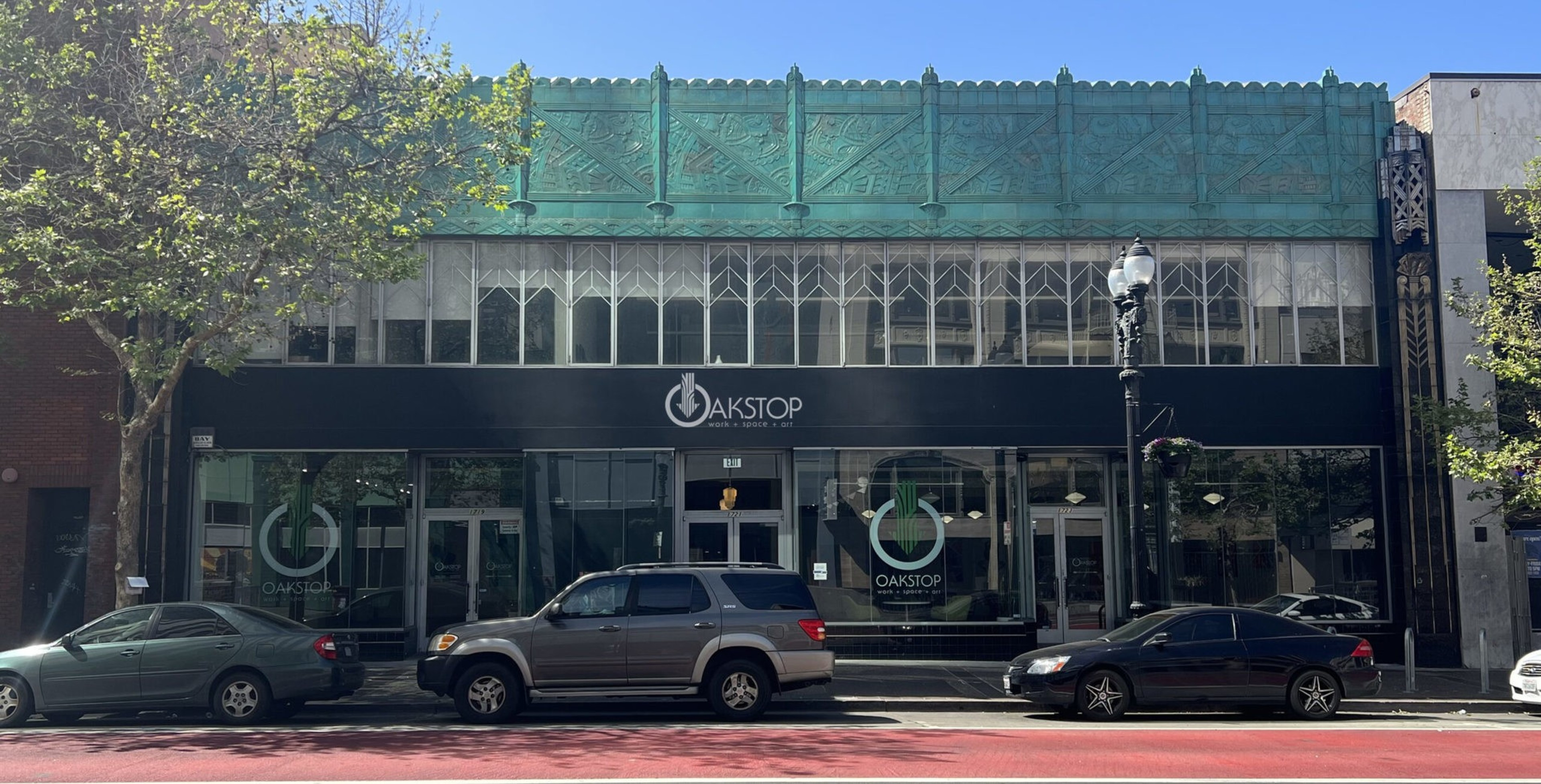For much of the past decade, Oakland’s real estate market was defined by its relation to San Francisco. Rising office buildings caught the spillover from the tech boom across the bay, and a flood of new residential units was built in the city’s downtown to house this new influx of employees.
But alongside that economic lift came the familiar problems of displaced artists and priced-out natives. With the current market downturn, some are seeing opportunities to set down an anchor in their community.
Oakstop was founded by Trevor Parham in 2014 to provide flexible space and events in the city where he was born and raised. From a small portion of a commercial building in Downtown Oakland, the business has grown to encompass six locations across Oakland and Richmond.
Recently, with $2.5 million in financing help from the Community Arts Stabilization Trust (CAST) (opens in new tab) and lending support from Community Vision, Oakstop was able to purchase its flagship building at 1721 Broadway for $8 million. CAST and Community Vision have offices in Oakstop’s building and previously worked together on programming and events.
“What I quickly realized was that if I didn’t own the building, I wouldn’t be able to create the kind of impact that I wanted to,” Parham said. “I also understood early on that the outside perception was that owning the building really validated the business model and business vision.”
Parham spent most of his early professional life working as a creative director for the rising tech economy based out of San Francisco before striking out as an entrepreneur.
One of the things he first noticed as he sought out spaces was the shortage of Black commercial property owners he could partner with. For years, Parham inquired about the potential of acquiring the property from its previous owners but didn’t see any interest until 2019. Over the next four years of conversation, the changing market conditions created a more accessible pricing environment for Oakstop.
Commercial vacancy rates in Downtown Oakland more than tripled from 9.8% to 34.7% between 2019 and 2023, according to research (opens in new tab) from real estate firm Cushman and Wakefield.
But Parham thinks the disruption in the industry from remote work bodes well for Oakstop’s flexible workspace model. On any given day, the company’s space is used by office workers, organizations coming in for meetings, staff retreats and workshops, as well as personal events like baby showers, graduations and memorials.
Arts nonprofits and community-oriented organizations pressured by rising rents in the pre-pandemic era have used the market downturn to find new opportunities to own real estate. CAST has played the role of facilitator and financing partner as part of its mission to create permanently affordable space for artists and arts and cultural organizations.
In San Francisco, CAST partnered with contemporary arts nonprofit CounterPulse to purchase and renovate 80 Turk St.—where it had been leasing space since 2016—for $7 million.
Parham said his company’s 25-person team is likely to double by the end of the year. Part of Oakstop’s mission is offering Black residents and artists workforce development training and jobs with the company. He said the company is also exploring shared ownership models for the property so that employees can benefit from owning that slice of real estate.
“In my lifetime, the Black population in Oakland has seen a 60% decline. That represents a big change in culture, community, vibrancy and even the desire to stay in his city,” Parham said. “The current changing landscape of real estate represents an opportunity for us who are still in Oakland to take hold of this moment and drive our agenda.”
Additionally, having a piece of commercial property to the company’s name allows for growth opportunities through financially leveraging the asset for expansion. Among the nearby cities that Parham said he has his sights on are parts of San Jose, Richmond and San Francisco. He’s also broadened his scope past the Bay Area into Baltimore, Detroit and Philadelphia.
“Oakstop is looking at a way to leverage real estate as a form of anchoring Black community, particularly the artists that created vibrancy and excitement who were later pushed out because of all that excitement,” Parham said.
